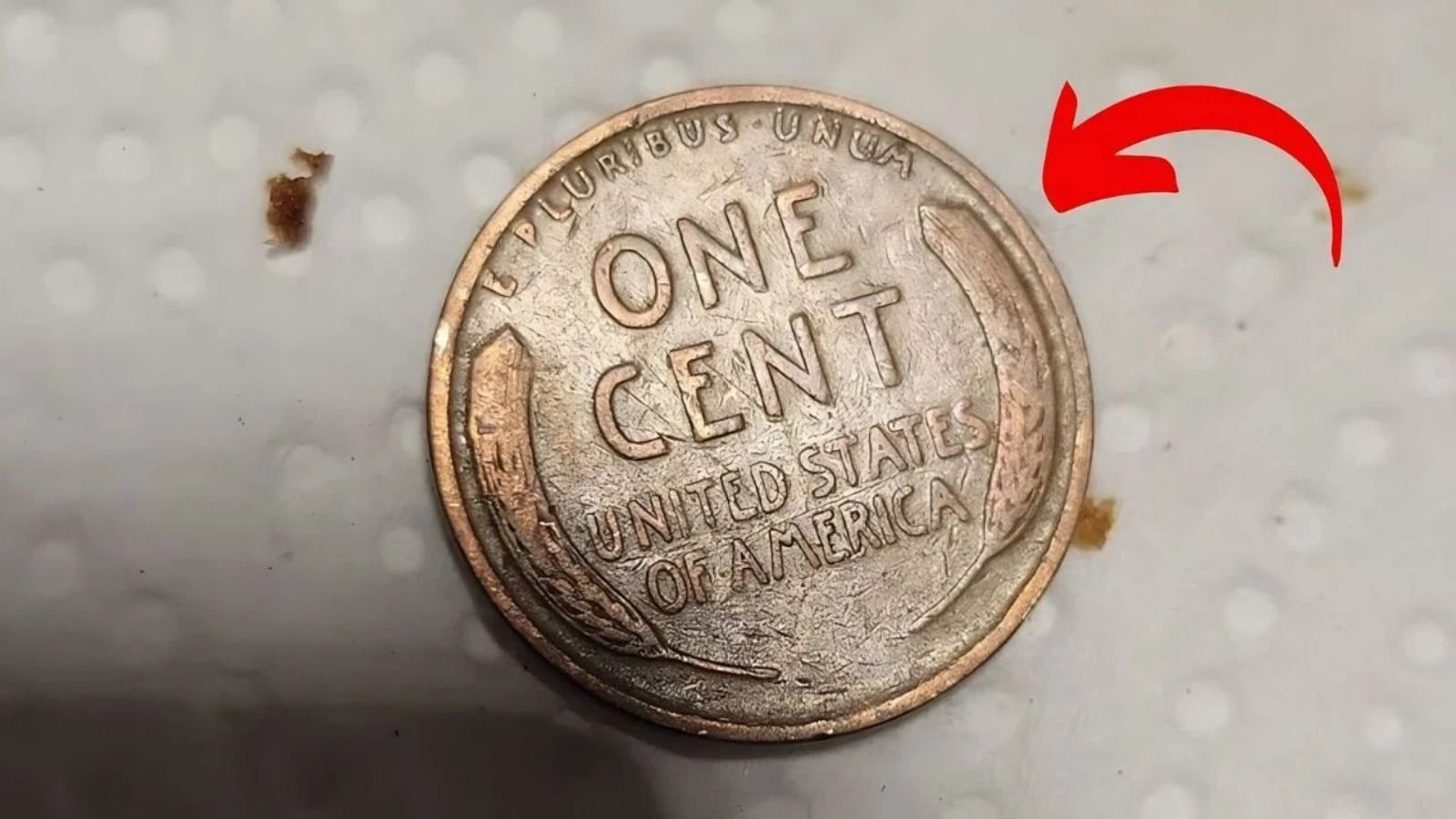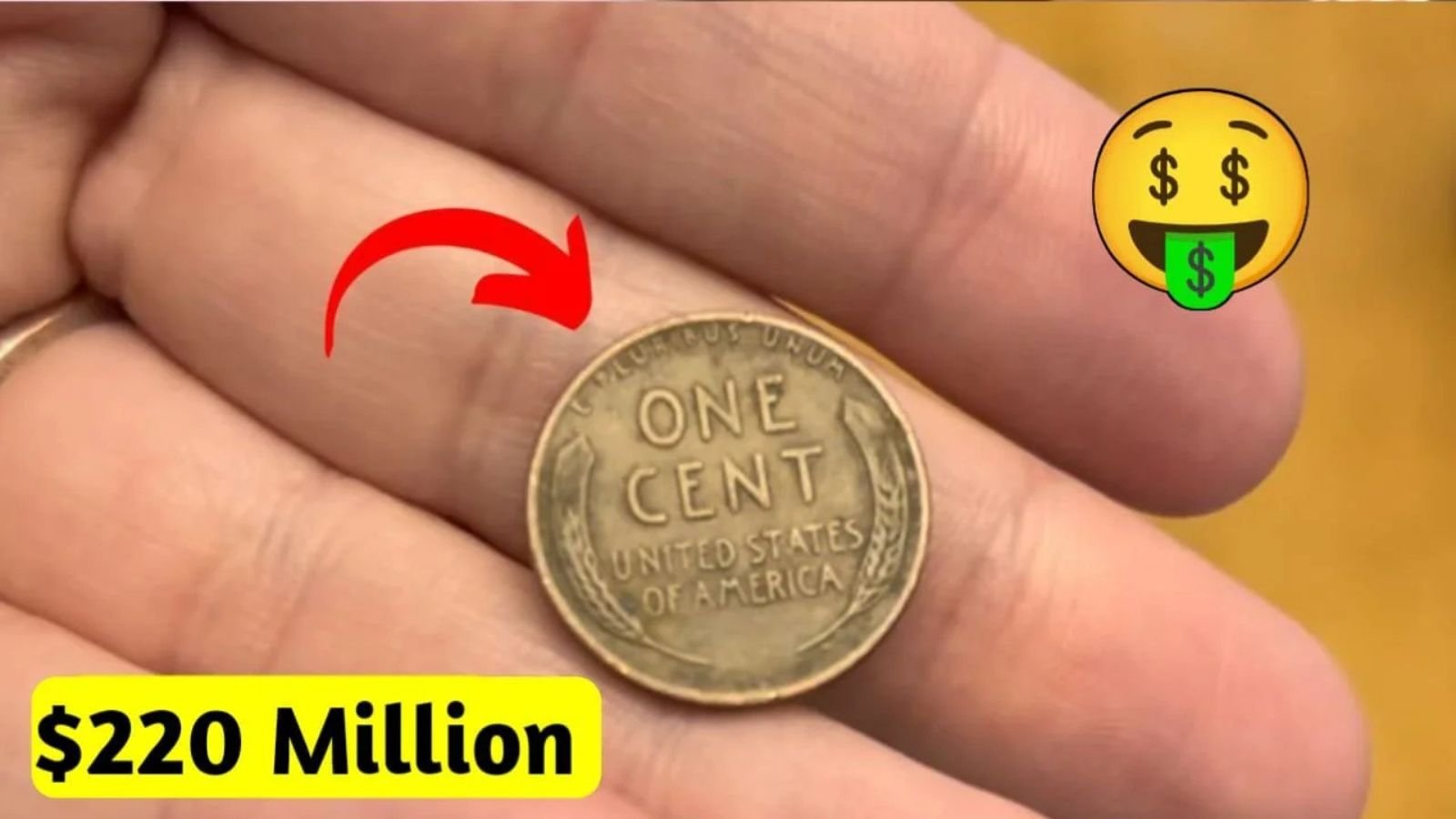In the vast and endlessly intriguing world of coin collecting, there’s one coin that continues to spark curiosity, ignite treasure hunts, and stir the hearts of collectors and casual hobbyists alike — the Lincoln Wheat Penny. Introduced in the early 20th century and now a staple of American numismatic lore, this coin is more than just pocket change. For some, it’s a historic keepsake. For others, it might just be a path to an unexpected fortune.
Among all the coins ever minted in the United States, few hold the mystique and allure of the Lincoln Wheat Penny. And among those, there’s a particularly rare version — one that has been rumored to be worth as much as $1.5 million, and it might still be out there, hiding in everyday circulation.
The Rare Bicentennial Quarter Valued at $2.5 Billion, Still in Circulation
Lincoln Wheat Penny: A Century-Old American Icon
The Lincoln Wheat Penny, affectionately known as the “Wheatie,” made its debut in 1909. It marked a major shift in U.S. coin design, becoming the first regular-issue American coin to feature a real historical figure: President Abraham Lincoln. Designed by Victor David Brenner, the coin was released to honor the centennial of Lincoln’s birth.
On the obverse, or “heads” side, sits the familiar bust of Lincoln. The reverse — the “tails” side — displays two stylized wheat stalks framing the words “ONE CENT” and “UNITED STATES OF AMERICA.” From 1909 until 1958, this simple yet elegant design defined the penny for nearly half a century.
Millions of these coins were minted each year. Most were made of 95% copper, with minor percentages of tin and zinc — until wartime scarcity briefly changed that formula. Though common in appearance, certain versions of the Lincoln Wheat Penny have turned out to be incredibly rare, with just a few mistakes or quirks making them extremely valuable.
The $1.5 Million Lincoln Wheat Penny: What Makes It So Valuable?
The Lincoln Wheat Penny at the heart of this million-dollar legend is believed to be a 1943 coin struck in bronze (copper), instead of the intended steel. During World War II, copper was a critical resource for the military, needed for shell casings and electrical wiring. As a result, the U.S. Mint decided to make 1943 pennies out of zinc-coated steel.
However, a small number of bronze planchets — leftover from the 1942 production line — were mistakenly used to strike a few 1943 pennies. These incredibly rare error coins have since become some of the most sought-after pieces in all of American numismatics.
Here’s what makes this particular Lincoln Wheat Penny so special:
-
Wrong Composition: It was supposed to be made of steel, but a few were accidentally struck on copper planchets from the previous year.
-
Unbelievable Rarity: Only a few dozen authentic 1943 bronze Lincoln Wheat Pennies are known to exist today.
-
Record Sales: One of these rare coins fetched over $1 million at auction. The elusive nature and historical backstory of the coin have since pushed estimates as high as $1.5 million.
-
Historical Oddity: These coins represent a rare wartime oversight, making them valuable artifacts as well as collectibles.
The fact that this ultra-rare Lincoln Wheat Penny might still be out there — undetected in someone’s piggy bank or stuck behind couch cushions — adds to its legendary status.
Is It Still in Circulation? Maybe.
The most exciting and surprising part of this story is that not every rare 1943 bronze Lincoln Wheat Penny has been accounted for. While several examples are safely locked away in private collections or have been authenticated by professional grading services, there are persistent rumors that others were never discovered — and could still be in circulation today.
Imagine finding a Lincoln Wheat Penny in your pocket change that looks like a normal penny at first glance, but turns out to be worth a small fortune. It sounds like a dream — but for a few lucky people, it has already come true.
Many experts believe a few examples of this million-dollar coin may still be hiding among ordinary coins, waiting to be found by a sharp-eyed collector or a lucky individual checking their change.
How to Spot the $1.5 Million Lincoln Wheat Penny
If you’re suddenly feeling the urge to check every penny in your jar, you’re not alone. Identifying a 1943 bronze Lincoln Wheat Penny requires a bit of coin knowledge and a keen eye. Here are the key characteristics that set this rare coin apart:
-
Date and Material: Look for a 1943 penny that is brown or reddish in color — the typical appearance of copper or bronze. Most 1943 pennies are silver-gray in color because they were made of steel.
-
Magnet Test: A quick trick is to see if the coin sticks to a magnet. Steel pennies will be magnetic; bronze or copper ones will not.
-
Weight Check: A bronze Lincoln Wheat Penny weighs about 3.11 grams, while steel pennies are lighter, at approximately 2.7 grams. A small digital scale can help here.
-
Mint Mark: Check for mint marks (D for Denver, S for San Francisco, or none for Philadelphia). While these don’t necessarily confirm rarity, they’re important when cross-referencing known examples.
If you find a coin that meets these criteria, don’t try to clean or alter it in any way. Instead, have it authenticated by a professional grading service like PCGS (Professional Coin Grading Service) or NGC (Numismatic Guaranty Corporation). These experts can confirm whether you’re holding a true million-dollar Lincoln Wheat Penny.
Lincoln Wheat Penny: The Problem with Fakes and Forgeries
As with any high-value collectible, the world of rare coins isn’t immune to fraud. There are many fake 1943 bronze Lincoln Wheat Pennies floating around, created by altering genuine coins or forging copies entirely.
Some counterfeiters shave the number “8” in a 1948 penny to resemble a “3,” making it look like a 1943. Others coat steel pennies in copper to mimic the bronze version. Unfortunately, these replicas can trick unsuspecting buyers or even amateur collectors.
That’s why authentication is critical. A certified grading service can not only validate a coin’s authenticity but also assess its condition, which plays a big role in determining its final value.
Lincoln Wheat Penny: More Valuable Variants to Watch For
While the 1943 bronze coin is the crown jewel of Lincoln Wheat Pennies, several other versions are worth serious money too. These include:
-
1909-S VDB: The very first year of production. Coins minted in San Francisco with designer Victor D. Brenner’s initials (“VDB”) on the reverse are rare and valuable.
-
1914-D: A low mintage year from the Denver Mint. These coins are especially hard to find in high grades.
-
1922 “Plain”: Produced in Denver, but due to a die issue, many lack a mint mark altogether. That anomaly makes it highly collectible.
-
1944 Steel Penny: Similar to the 1943 bronze, a few 1944 pennies were mistakenly struck in steel instead of copper. These are also incredibly rare.
Each of these rare Lincoln Wheat Pennies can fetch hundreds or thousands of dollars — sometimes much more — depending on condition and demand.
The Collector’s Rush: Why the Lincoln Wheat Penny Still Matters
The story of the million-dollar Lincoln Wheat Penny has reignited interest in coin collecting across all age groups. More people than ever are digging through jars of spare change, asking grandparents about old coins, and checking estate sale bins with renewed enthusiasm.
What’s especially charming about the Lincoln Wheat Penny is that it represents history you can hold in your hand. These coins passed through the Great Depression, two World Wars, and the rise of the modern American economy. Holding one isn’t just about monetary value — it’s about connecting with the past.
And in rare cases, it might be about connecting with a seven-figure windfall.
Final Thoughts: Don’t Underestimate the Penny
So the next time you’re about to toss a penny aside or drop it into the nearest tip jar, take a second look — especially if it’s a Lincoln Wheat Penny. That small, unassuming coin could be worth far more than you think.
Whether or not the elusive $1.5 million penny is ever found in circulation again, the possibility alone adds excitement to an already rich field of historical collecting. After all, treasure doesn’t always come in the form of pirate gold or lottery tickets — sometimes, it’s copper-colored, weighs 3.11 grams, and says “ONE CENT.”
Keep your eyes open. The next time you check your change, you might just discover history in the palm of your hand — and with it, the legendary Lincoln Wheat Penny.
Some Important Link
| Telegram Group | Click Here |
| WhatsApp Group | Click Here |
| Home Page | Click Here |
Who Can Get the $725 Monthly Stimulus Checks? Eligibility, Payment Dates & How to Apply













